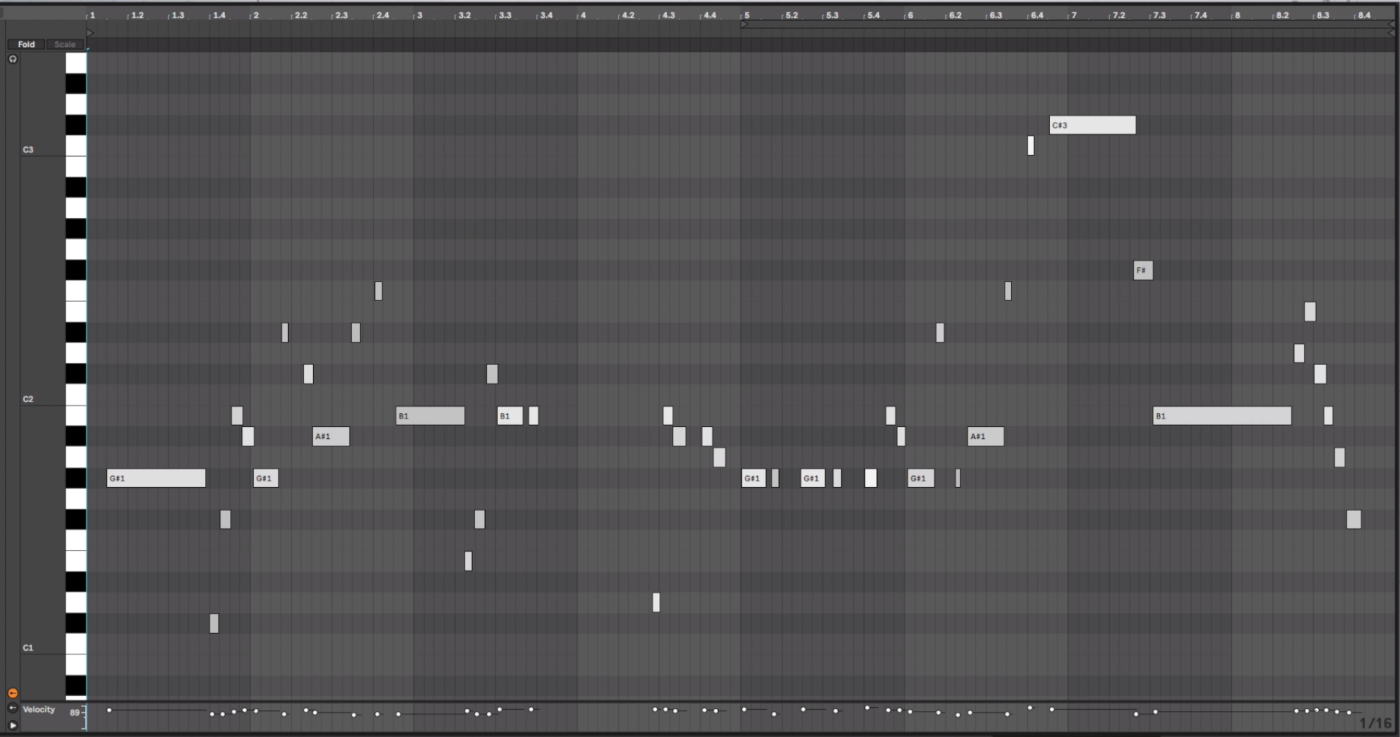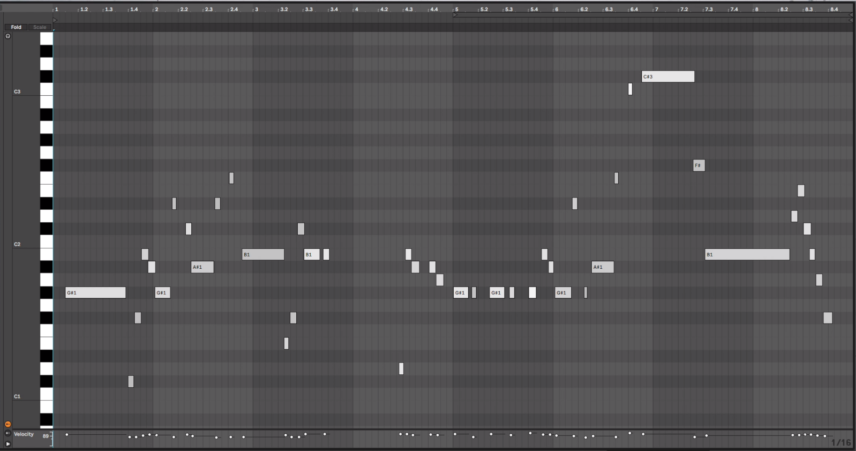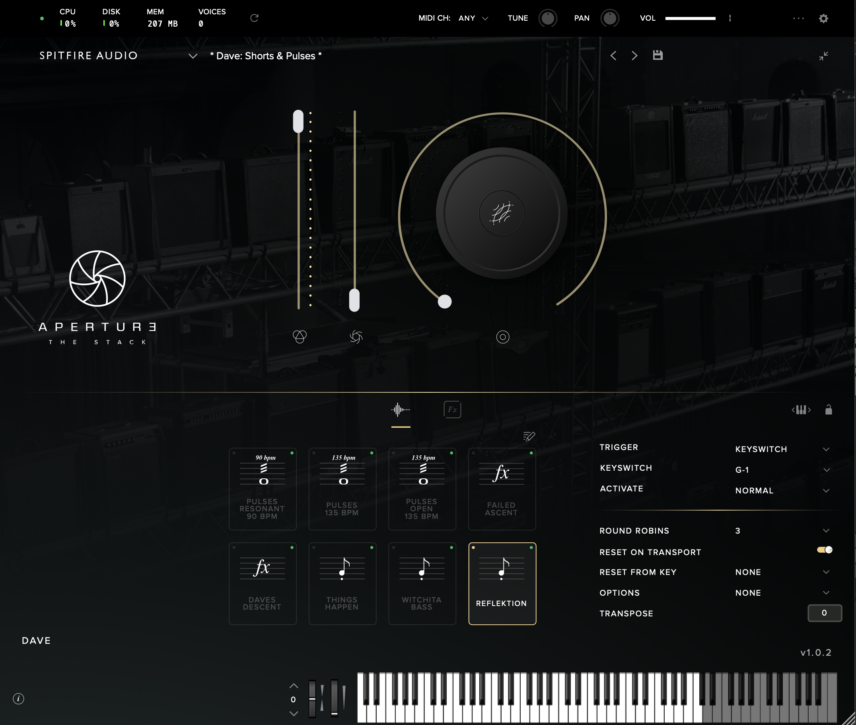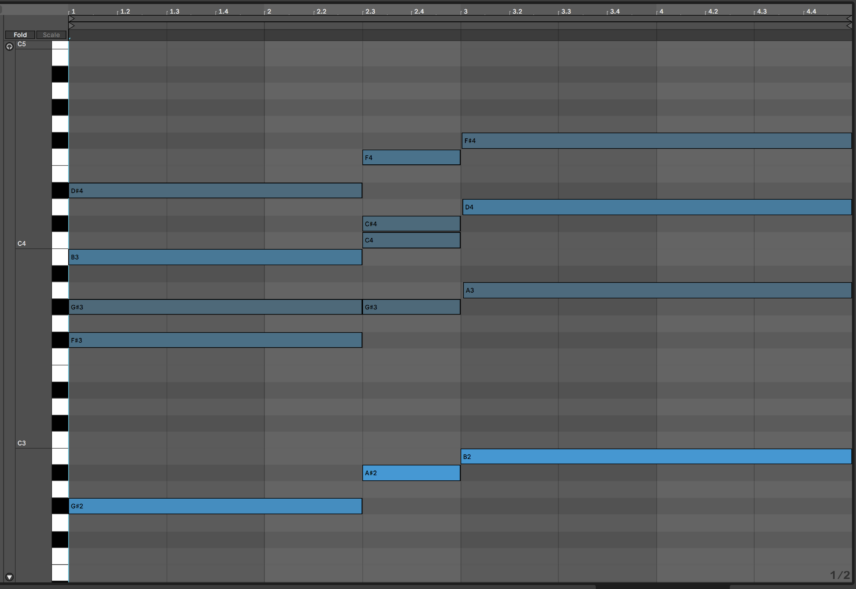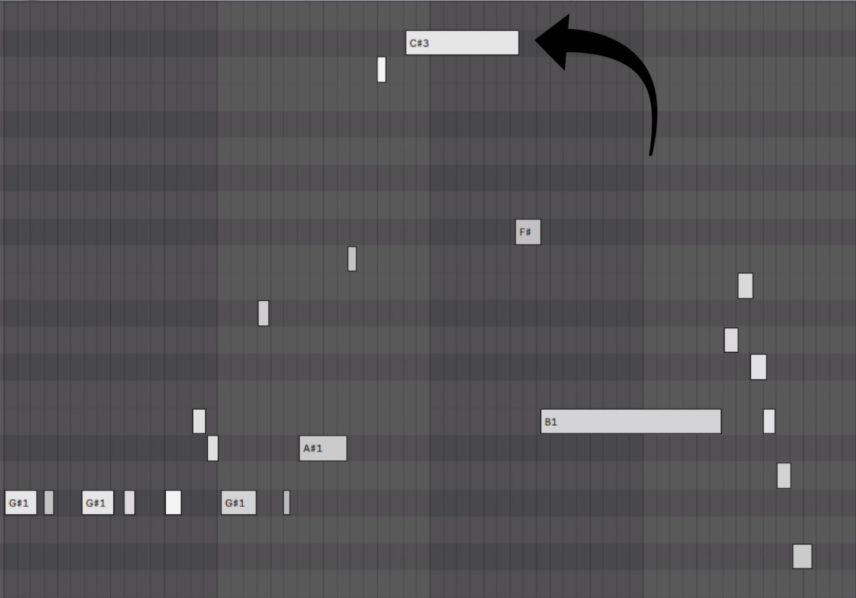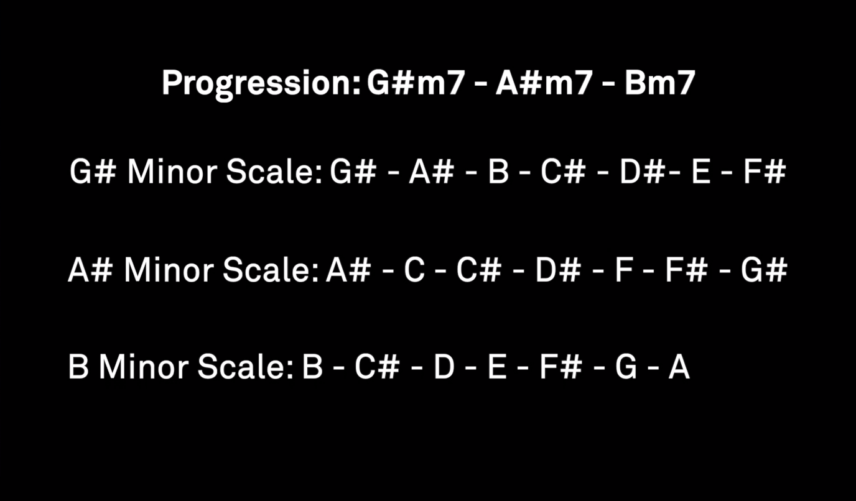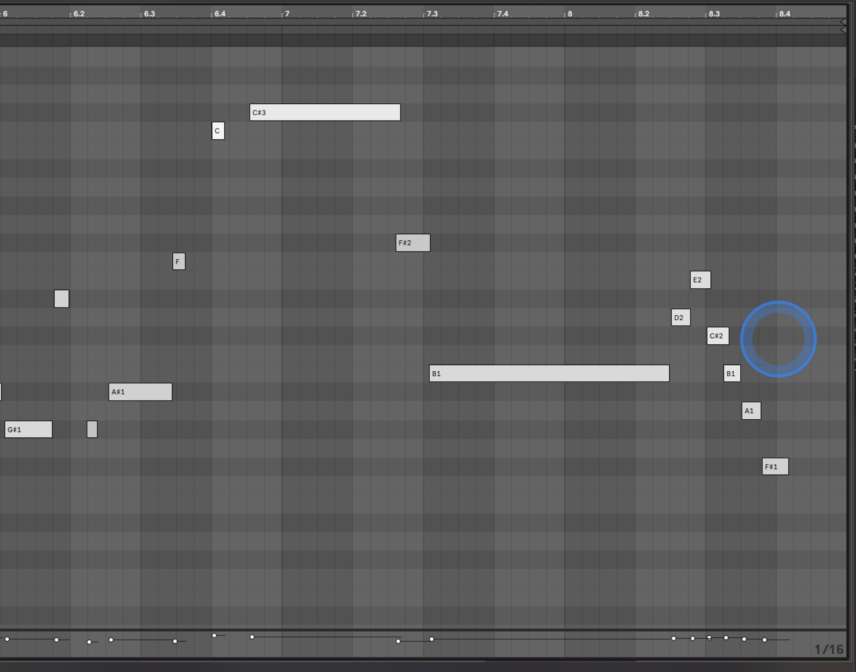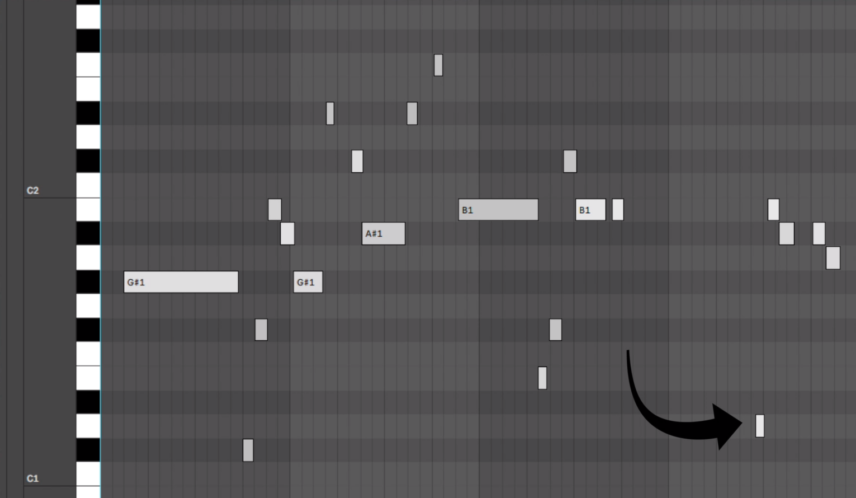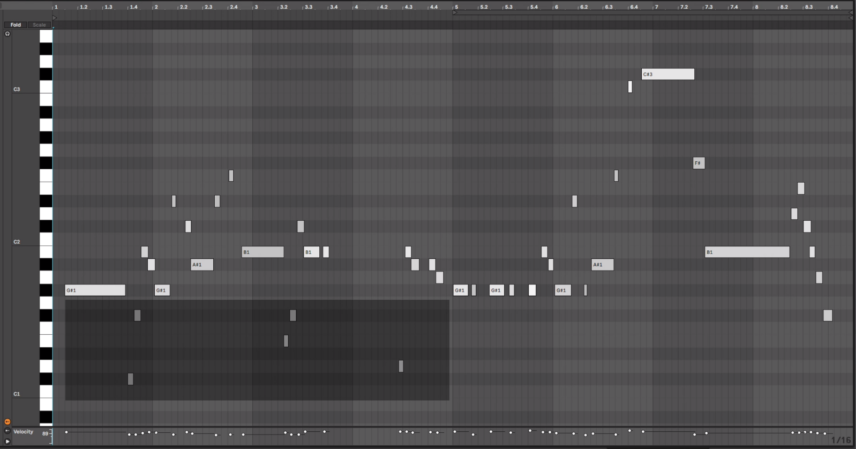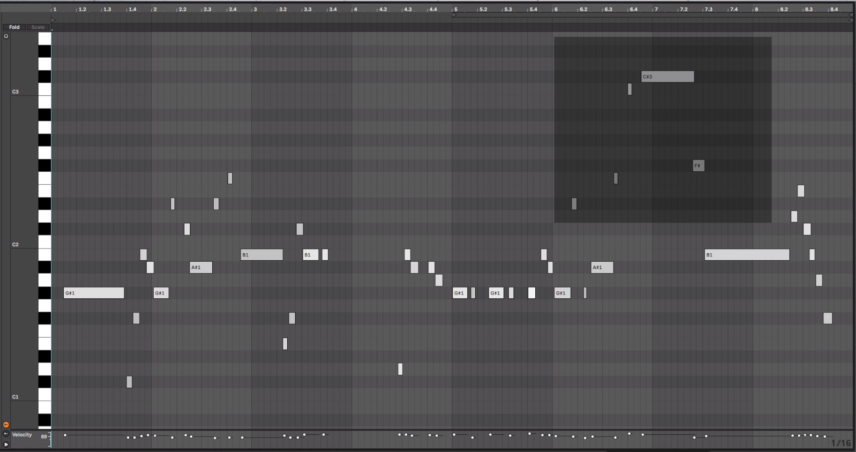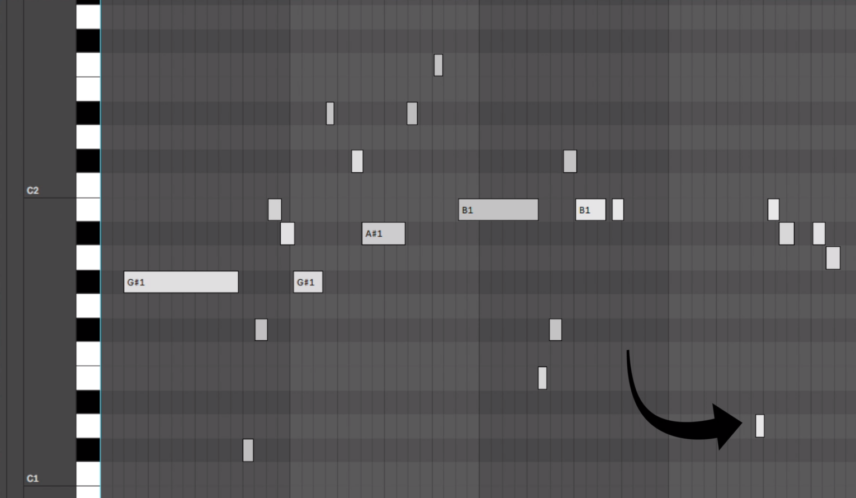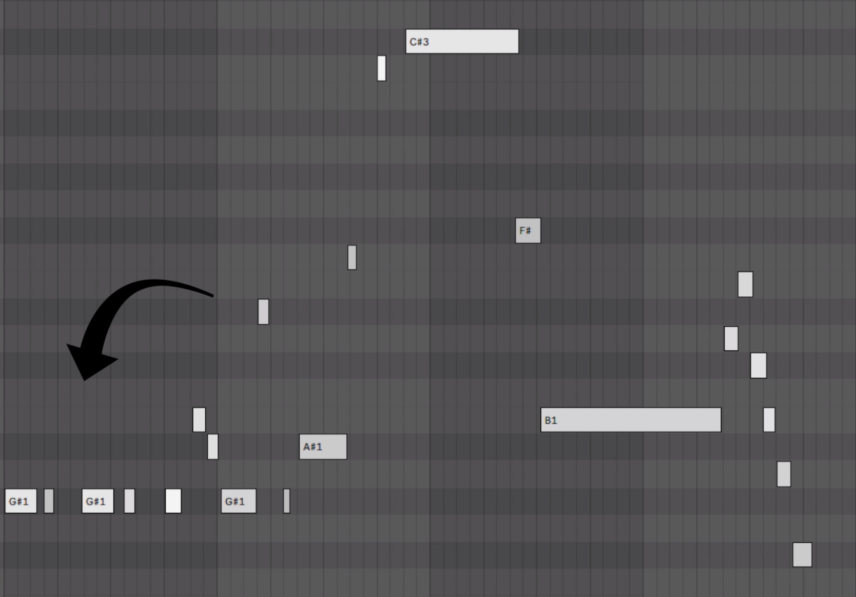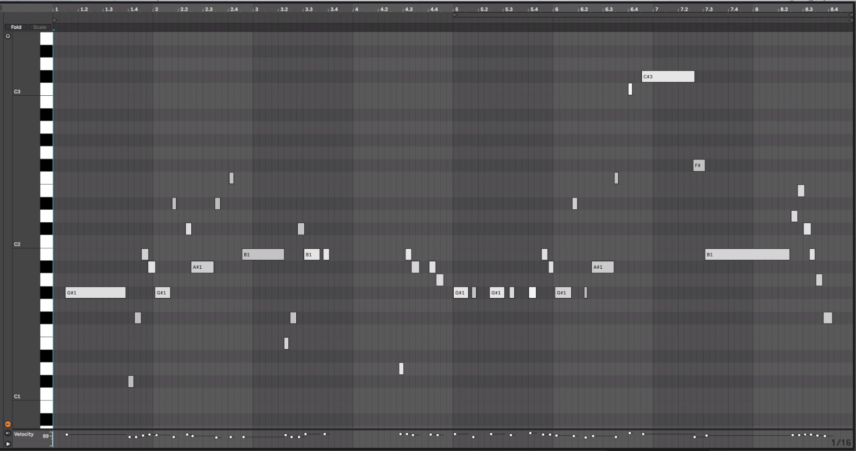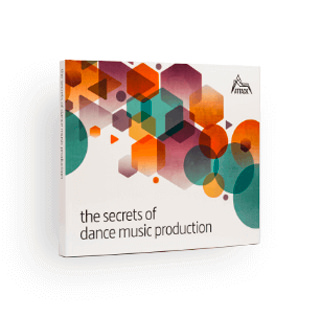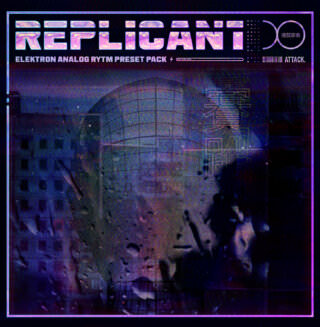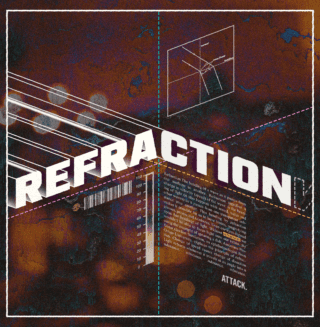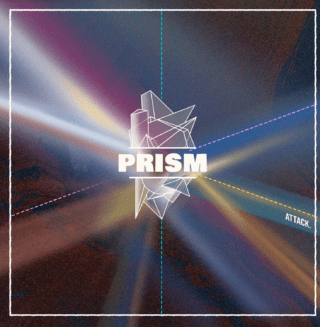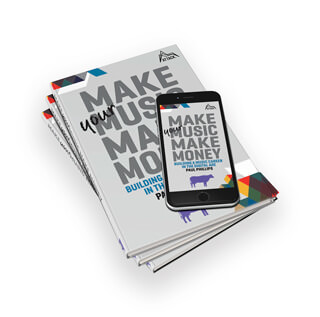In this new Passing Notes, we look at techniques you can apply to transform your synth bass lines from basic loops into one of the catchiest aspects of your track.
We’ve spent a lot of time in the Passing Notes series on chords, pads and general music theory. That said, one subject that is not discussed nearly as much as it should be are synth basslines. Many producers settle for simple loops that are usually based around root notes, and don’t get us wrong, there’s nothing wrong with a minimal catchy bassline! However, a few simple techniques can elevate your bass parts to a whole new level.
In this article we’ll be breaking down an eight-bar bassline we created over a house-friendly chord progression. As we progress, we’ll look at composition tricks like expanding note range, writing fills, experimenting with variation in rhythm and using dead notes.
Here’s the bassline we are creating, looped twice:
N.B: We recommend following along with headphones or studio monitors as some of these results can be subtle. As ever, click any image to see a larger version.
We are using a sub-sample layered with the pluck-bass-style REFLEKTION preset, and Spitfire Audio’s Aperture – The Stack instrument.
Follow along by downloading the project folder that contains all MIDI files here. Just input the details once! The email will shortly follow!
The Chord Progression
One precursor to a really good bassline is a grooving chord progression. In house music, this is easily achieved by using chords that don’t all belong in one scale. This is commonly done with minor chords, regardless of which scale they belong to.
This way of writing progressions also allows for the bassline to jump between scales, but we’ll get into that more in the following sections!
The chords in our backing track go G# Minor 7 for one and a half bars, A# Minor 7 (add 9) as a half bar transition chord and then B Minor 7 for two bars.
G#m7 / A#m7 (add9) / Bm7 / Bm7
We’re using Spitfire Audio’s Originals Epic Strings for the low strings and Originals Intimate Strings for the high strings one octave up.
Here’s how the chords sound in solo:
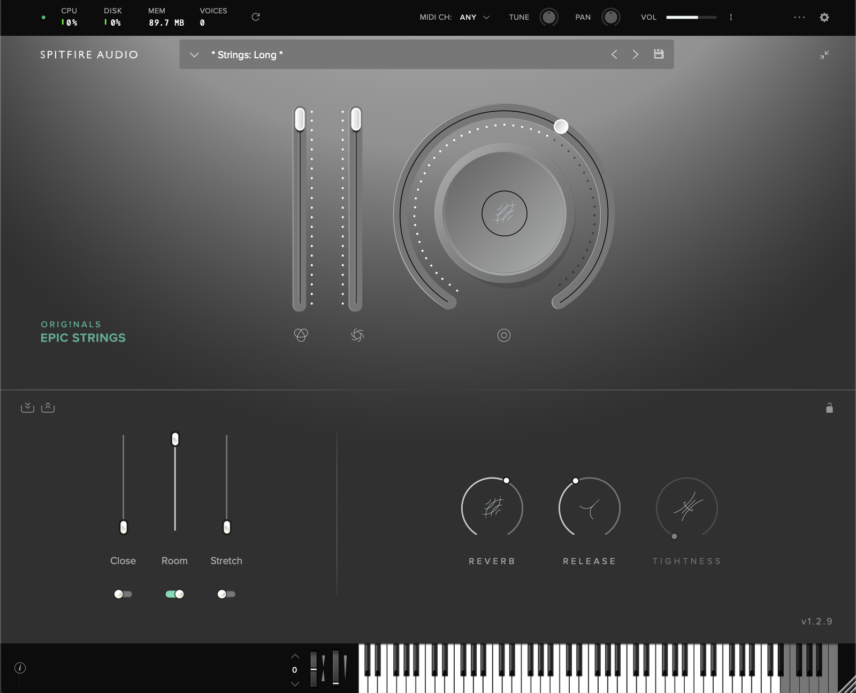
Bassline Technique #1: Emphasizing Off-Beats
Let’s start by taking a look at the timings of the main sustained notes in the line.
During the first four bars of this progression, all three of our root notes are played on off-beats, which means notes that aren’t located on downbeats. This creates a rhythmic contrast with the drums.
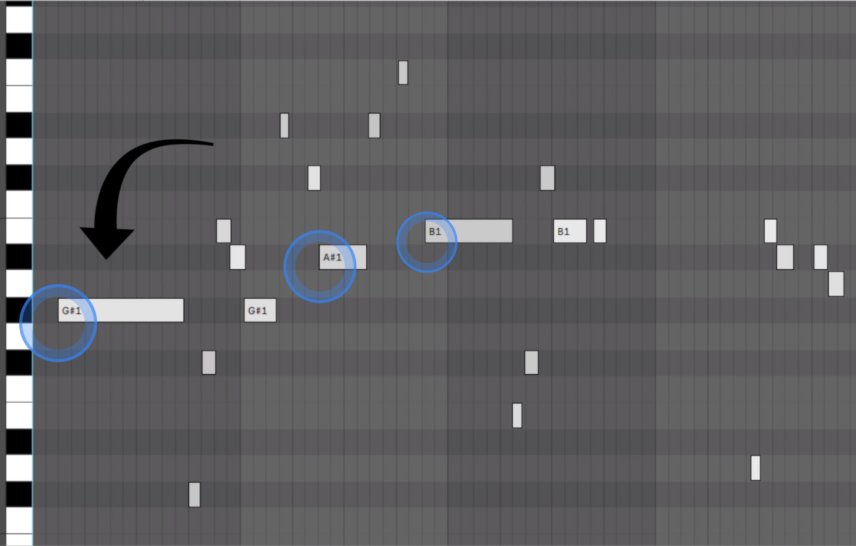
From the start, the first G# comes in on the second eighth note. The A# in bar two plays on the third eighth note and the B plays on bar four’s last eighth note.
It’s common for root notes to be the first notes you hear when the chord changes, but this is a good way to spice them up.
Avoiding the downbeats for the first few bars will make the times you actually do catch the downbeats later much more impactful. This is because of the rhythmic tension the off-beats will create, compared to the release when the bass finally hits the downbeats. For example when it hits the B on a downbeat at the end of the third bar.
In the second four bars of the bassline, the high C# note at the end of bar six is another example of emphasizing off beats, as it hits on the last eighth note in its bar. It’s also the highest note in the whole eight-bar line, so it really rubs in the rhythmic effect.
There is then a release to the tension created by the high C# when the low B note hits on the downbeat in the second half of bar seven.
Bassline Technique #2: Fills With Chord Tones
In between the root notes, we have faster 16th-note fills using notes from the chord tones. These fills allow the bass to use the space between sustained notes to sing its own melody, while also adding rhythmic variation.
In terms of note choices, you can use any notes from the chord’s scale. As we’ve used different minor chords from multiple scales, the notes available for selection will change during each chord:
Fills sound even better if you use the main chord tones. For example, let’s look at the first bar G# minor. A G# minor chord voicing would include notes like the root G#, the minor 3rd B, the fifth interval D#, the 11th or 4th degree C#, the minor 7th F# and the add 9 or second-degree note A#.
Here’s how a G# Minor chord using these main chord tones would sound with Originals Epic Strings:
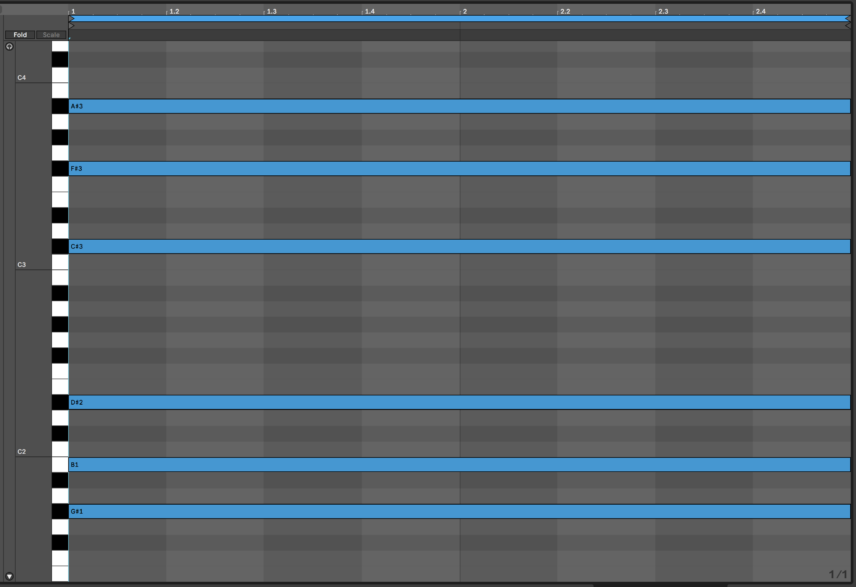
These are the notes to choose from while writing fast fills. It gets even better when you mix up the octaves. For example, you can see that we started the line’s first fill with C# and F# notes lower than the root note, and then in the second bar, we used notes higher than the root note.
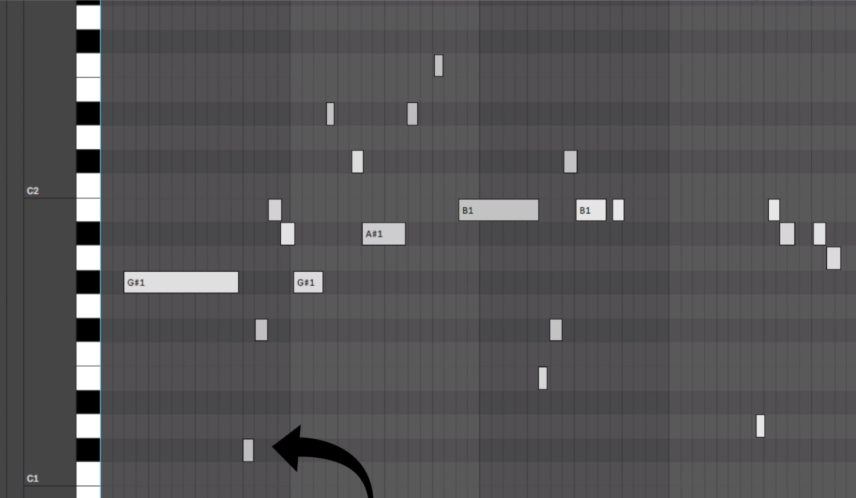
We do something similar with the fill in bar three. The notes go from E up to F# and C# then back down to the root note B.
In the eighth and final bar, the fill is simply descending notes in the chord’s B minor scale, making a jump in between some of the notes, making it sounds more unique. This note jumps over the D between E and C#, along with the G between A and F#.
As a side note, using triplets is a great way to vary fills. In bar four, we’ve used triplets for a chromatic descent from B down to G#, which restarts the progression in bar five.
Bassline Technique #3: Jumping Between Octaves
One key element that is often ignored in bassline composition is note range. If you visually look at the bass’ MIDI clip, you can see that our range in the first four bars is different to the range in the last four bars.
The first four bars feature notes from a lower octave. Bars six and seven use notes from two octaves higher.
A good way to jump to those higher notes is to use common intervals. For example, 1-5-9, 1-7-octave and 1-3-7 and the much-used 1-5-octave.
For example, in our first chord G# Minor:
- 1-5-octave would be G# – D# – G# (like a guitar power chord)
- 1-5-9 would be G# – D# – A#
- 1-7-octave would be G# – F# – G#
- 1-3-7 would be G# – B – F#
These are basically arpeggios!
In our bassline’s sixth bar we go up the 1-5-9 in A# minor with the notes A# to F, then to C
In bar seven we go back down 9-5-1 for the B minor chord, which is C#-F#-B.
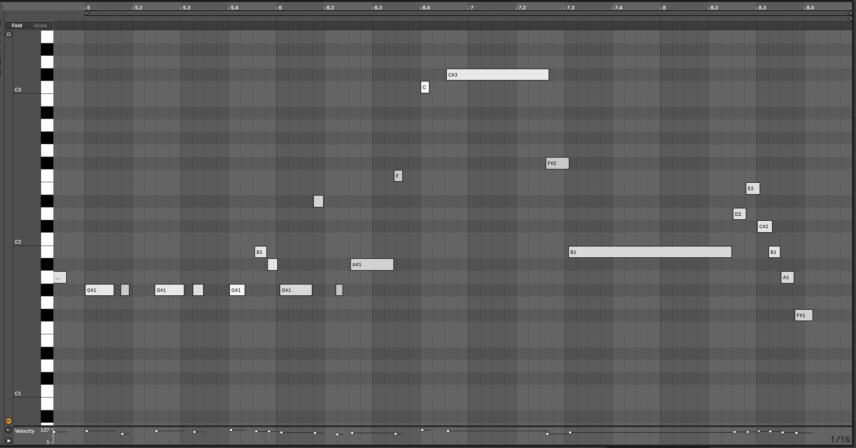
Bassline Technique #4: Using Dead/Muted Notes
Going back to rhythm, bass players would use dead notes to add a percussive quality to their lines. These are short 16th notes that come right before and after fills or sustained notes.
They especially work well when emphasizing off-beats. For example the low E in bar three:
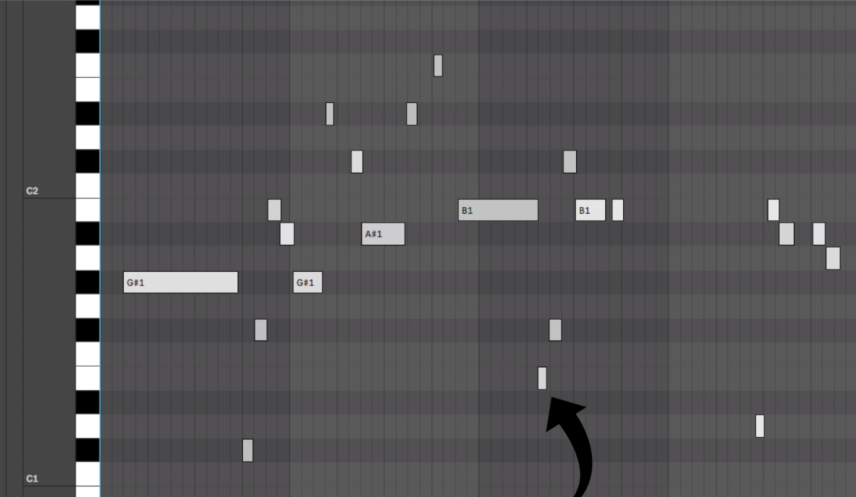
Or the note before the downward chromatic fill in bar four:
They’re really important for the more active root-note rhythm in bar five:
Bassline Technique #5: Writing Using Themes
As a final point, we’ve talked a lot about short notes versus sustained notes, but the different areas which they’re used can introduce storytelling to a bassline.
In our first four bars, the root notes are played with longer notes but then in bars five and six, they are shorter and pluckier.
The rhythm changes again in bars seven and eight, where the longest notes of the whole eight bars come in.
You can use these themes within lines and also across entire track arrangements to vary bass parts.
Here’s the whole bassline once more in solo with drums:
And now with chords:
